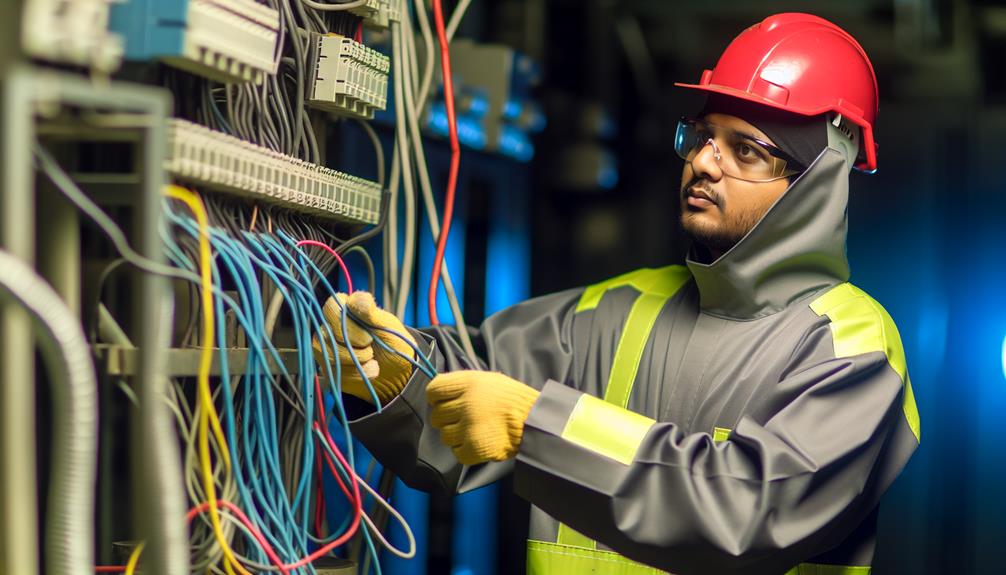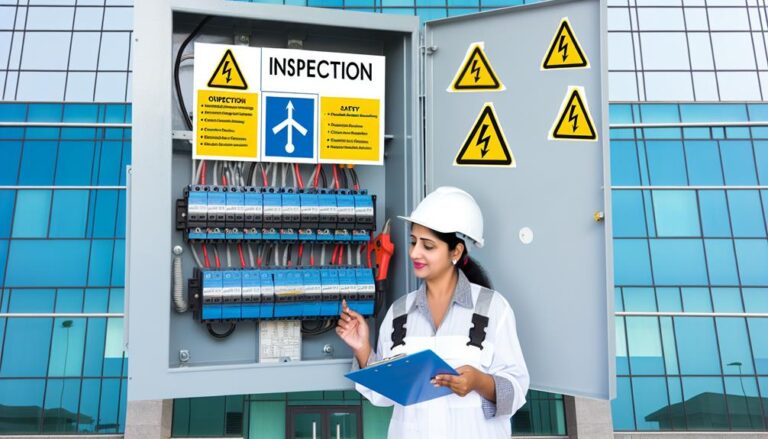The Challenges of Commercial Electrical Work and How to Overcome Them
Oh, the joys of commercial electrical work! You never know what kind of electrifying challenges you’ll face next. From navigating complex wiring systems to ensuring strict compliance with regulations, it’s a high-voltage balancing act that requires finesse and expertise.
And let’s not forget about the high-risk environments you’ll find yourself in, where safety is paramount. Add tight project deadlines and the need for effective client communication, and you’ve got yourself quite the jolt.
But fear not, for in this discussion, we’ll explore the ways to overcome these obstacles and keep the current flowing smoothly. So, get ready to plug into the world of commercial electrical work and discover the solutions that will keep you powered up and ahead of the game.
Key Takeaways
- Proper understanding of complex wiring systems and efficient electrical circuit layout is essential in overcoming challenges in commercial electrical work.
- Compliance with building codes, industry-specific safety standards, and obtaining necessary permits are crucial for ensuring compliance and safety in commercial electrical projects.
- Conducting thorough risk assessments, identifying potential hazards, and providing appropriate personal protective equipment are important in managing high-risk environments in commercial electrical work.
- Effective project management, clear communication, and utilization of technology tools can help overcome challenges related to deadlines, resource allocation, and streamlining communication in commercial electrical projects.
Complex Wiring Systems
Complex wiring systems present numerous challenges in commercial electrical work. As an electrician, you’re well aware of the intricacies involved in dealing with these systems. From large-scale industrial complexes to multi-story office buildings, the complexity of wiring systems can vary greatly. However, regardless of the size or scope of the project, there are common challenges that you’ll face.
One of the main challenges is ensuring the proper distribution of electrical power throughout the building. This involves designing and implementing an efficient electrical circuit layout to meet the specific needs of the facility. You must carefully consider factors such as load capacity, voltage drop, and electrical code compliance.
Another challenge is troubleshooting and repairing faulty wiring systems. With complex wiring systems, identifying the root cause of a problem can be like finding a needle in a haystack. You must possess a deep understanding of electrical principles and utilize specialized tools to diagnose and resolve issues.
Moreover, coordinating with other tradespeople and contractors is crucial in commercial electrical work. You must collaborate closely with architects, engineers, and construction workers to ensure that the wiring systems are seamlessly integrated into the overall design and construction of the building.
Strict Compliance Regulations
Strict compliance regulations play a critical role in commercial electrical work, ensuring the safety and integrity of electrical systems in various types of buildings. It’s important to understand and adhere to these regulations to avoid potential risks and legal consequences.
Here are four key aspects to consider when dealing with strict compliance regulations in commercial electrical work:
- Building codes: Familiarize yourself with local, state, and national building codes to ensure that electrical installations meet the required standards. These codes outline specific requirements for electrical systems, including wiring, grounding, and equipment installation.
- Safety standards: Follow industry-specific safety standards, such as those set by the National Electrical Code (NEC) or Occupational Safety and Health Administration (OSHA). These standards provide guidelines for safe electrical practices, including proper equipment handling, personal protective equipment (PPE), and electrical system maintenance.
- Permitting and inspections: Obtain the necessary permits before starting any electrical work and schedule inspections to ensure compliance with regulations. Failure to obtain permits or pass inspections can result in fines, delays, and potential hazards.
- Documentation and record-keeping: Maintain detailed records of all electrical work, including design plans, equipment specifications, and inspection reports. Accurate documentation allows for effective troubleshooting, future maintenance, and compliance verification.
High-Risk Environments
In commercial electrical work, navigating high-risk environments requires meticulous planning and implementation of safety measures. These environments can include construction sites, industrial facilities, and commercial buildings. The inherent dangers in these settings make it imperative to prioritize safety at all times.
To begin with, conducting a thorough risk assessment is crucial. This involves identifying potential hazards such as live wires, exposed electrical equipment, and confined spaces. By assessing the risks associated with each task, you can develop strategies to mitigate them effectively.
Implementing safety measures is another essential aspect of working in high-risk environments. This includes providing appropriate personal protective equipment (PPE) to all workers, such as safety glasses, gloves, and hard hats. Additionally, ensuring that all equipment is well-maintained and in compliance with safety standards is vital to preventing accidents.
Regular training and communication are key to maintaining a safe working environment. Conducting training sessions on electrical safety, emergency procedures, and the proper use of equipment can help employees understand and adhere to safety protocols. Clear communication channels should also be established to report any potential hazards or safety concerns.
Tight Project Deadlines
Navigating tight project deadlines in commercial electrical work demands meticulous planning and efficient execution to ensure timely completion of tasks. The pressure to meet deadlines can be overwhelming, but with the right strategies, you can overcome this challenge and deliver exceptional results. Here are four key steps to help you navigate tight project deadlines:
- Develop a detailed project plan: Start by breaking down the project into smaller tasks and setting clear deadlines for each. Consider the dependencies between tasks and allocate resources accordingly. A well-structured plan will help you stay organized and ensure that all tasks are completed on time.
- Prioritize tasks: Identify critical tasks that must be completed first and allocate resources accordingly. By focusing on the most important tasks, you can ensure that key milestones are met, even if there are delays in other areas.
- Streamline communication: Effective communication is crucial when working under tight deadlines. Ensure that all team members are aware of their responsibilities and have access to the necessary information and resources. Regular progress updates and clear communication channels will help identify and address any issues promptly.
- Utilize technology: Leverage technology tools and software to automate repetitive tasks and streamline processes. This can help save time and increase efficiency, allowing you to meet deadlines more effectively.
Client Communication and Expectations
Effective client communication and managing their expectations is crucial in commercial electrical work to ensure a successful project.
As an electrical contractor, it’s your responsibility to clearly convey technical information to clients while understanding their needs and concerns.
By establishing open lines of communication, you can address any questions or uncertainties they may have, ensuring a smooth and efficient project completion.
When engaging with clients, it’s essential to use a technical and analytical approach.
Clearly explain the scope of work, timelines, and potential challenges. This level of precision will help clients understand the complexities of the electrical work involved and allow them to make informed decisions.
Additionally, by actively listening to their concerns and expectations, you can tailor your communication to meet their specific requirements.
Managing client expectations is equally important.
Clearly define project milestones, deliverables, and any potential limitations. This will help avoid misunderstandings and prevent unrealistic expectations from arising.
Regular updates and progress reports will also keep clients informed and allow for timely adjustments if necessary.
Lastly, remember that effective communication is a two-way street.
Encourage clients to provide feedback and address any issues promptly. By fostering a collaborative environment, you can build trust and ensure that the project meets or exceeds their expectations.







